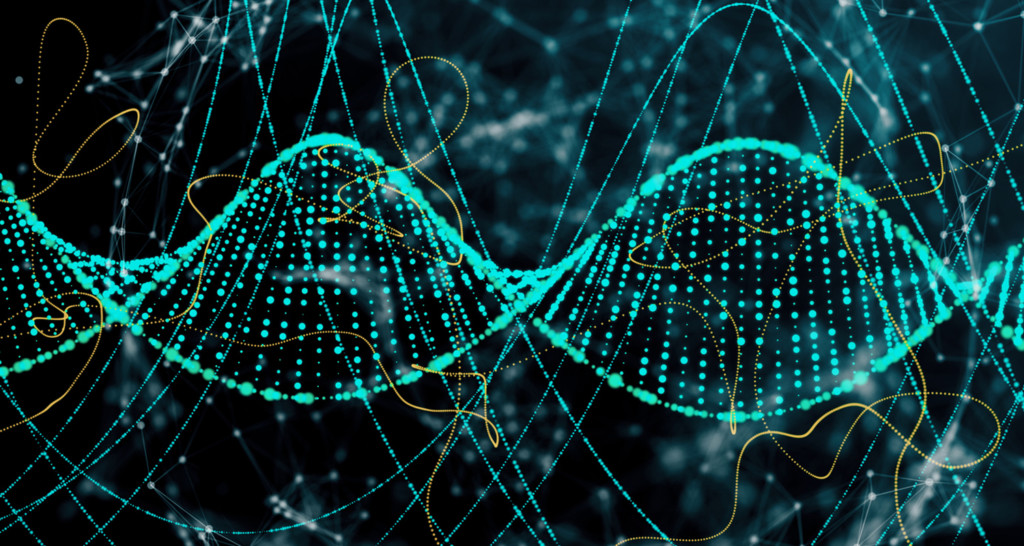
[tldr]
- The Earth BioGenome Project aims to sequence the genome of all 1.5m known species over the next decade.
- The more information is known about life on Earth, the better equipped humans will be to survive.
- Your connection to the world around you is staggeringly complex. Your mitochondria are scanning your environment and telling the petri dish that is your body what to do to stay alive the longest.
- The goal of the new project is to find solutions to the major issues threatening your survival.
[/tldr]
Take a moment to look around you. Perhaps you see another person, or a dog, or maybe you’re alone, and all you glimpse is a tree outside of your window. I’m going to make an educated guess that you see yourself as separate to your surroundings. That’s not an accusation — it’s simply human nature. But it’s a fallacy.
The fact is, you and I, and every other person and organism on Earth, are indelibly connected. Your survival is dependent on the survival of other life forms. Figuring out how to protect other animal and plant species is the only way humans stand a chance. That’s why I’m excited about the Earth BioGenome Project (EBP), a new global initiative that will crack the code to protecting our continued existence on this planet. Described as the “next moonshot for biology,” the $4.7 billion project aims to sequence the genome of all 1.5 million known species, including every animal, plant, and fungi, over the next decade.
Knowledge is power
Here’s why that matters. A genome is the full set of genetic information in an organism. It contains all of the instructions that make you who you are. (Learn more about understanding your genes here.) Knowledge is power. The more information we have about what makes plants and animals tick, the better equipped we’ll be to save ourselves and everything around us.
Harris Lewin, a professor at the University of California and chair of the EBP, says the genome project “will ultimately create a new foundation for biology to drive solutions for preserving biodiversity and sustaining human societies.”
“Having the roadmap, the blueprints…will be a tremendous resource for new discoveries, understanding the rules of life, how evolution works, new approaches for the conservation of rare and endangered species, and…new resources for researchers in agricultural and medical fields,” he told a press briefing in London.
An uncertain future
The clock is ticking, and the effects of climate change are already being felt (see this alarming report from the Intergovernmental Panel on Climate Change). We’re in the middle of the sixth mass extinction of life on our planet, and this doesn’t bode well for anyone, or any thing.[ref url=”http://www.pnas.org/content/114/30/E6089″] According to a recent report, the extinction of one animal or plant species could lead to an “extinction domino effect,” resulting in the decimation of all life on Earth. [ref url=” https://www.sciencedaily.com/releases/2018/11/181129122506.htm”]Conserving the world’s known ecosystems is imperative if we want to live a long time. I don’t know about you, but I plan to achieve my goal of living till at least 180.
Everything is connected
Your connection to the world around you is staggeringly complex. Your body is a multi-tiered system of government. Its foundation is your mitochondria — the battery packs within all of your cells. These energy powerhouses are doing their best to scan the environment around you and tell the petri dish that is your body what to do to stay alive the longest. One of the things they look for in the environment is signs of other life, starting with bacteria, fungus, viruses, and even larger life forms, including the plants and animals that you eat or come into contact with.
Related: Mitochondria Are the Key to Slowing Down the Aging Process
Understanding this interlocking system is the key to being the best stewards of the environment we can possibly be. (Looking at the situation more broadly, it is also the key to a successful space program. I’m not convinced you can take a human out of the environment and expect it to live very well, especially for more than one generation.). The new genome project will build an open digital repository of information, and use that data to find solutions to the major issues threatening our survival, including the effect of climate change on biodiversity and how best to preserve endangered species and ecosystems.
That’s why I am more excited about this new announcement than I was about the Human Genome Project, which, between 1990 and 2003, mapped the human genome. We owe it to the next generation to sequence the DNA of every life form we can find, because they are changing, and some are going away. How cool is it that science is now able to do this, and we are actually putting our resources as a species to getting the data so that we can learn how to use it for the highest good.













